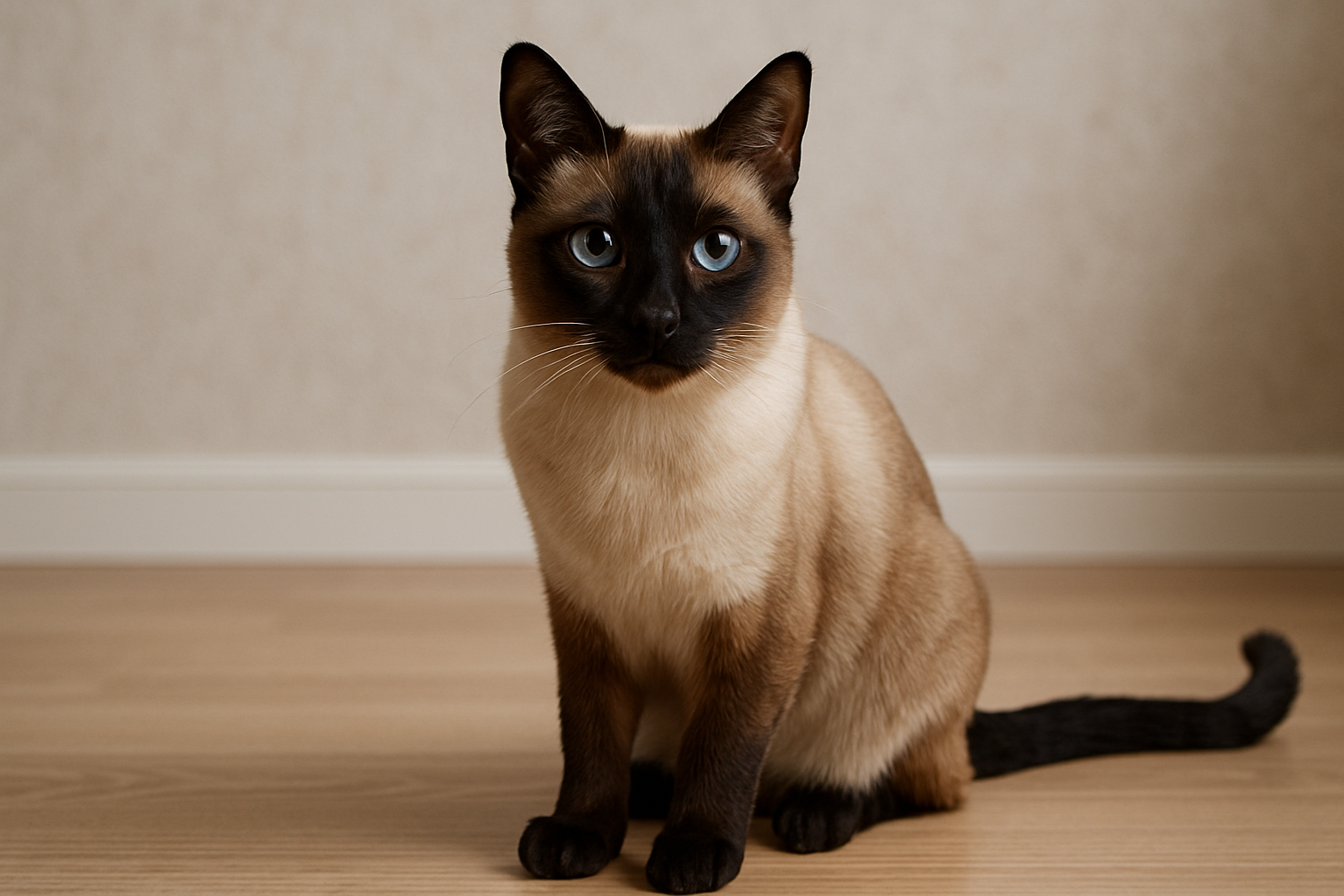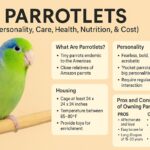The Siamese cat stands as one of the most recognizable cat breeds in the world, with its striking blue eyes, distinctive pointed coat pattern, and slender body. Beyond their unique appearance, these cats have won the hearts of millions with their vocal personalities, intelligence, and affectionate nature. This ancient breed carries a rich history from its origins in Southeast Asia to becoming one of the most popular cat breeds globally.
The Rich History of Siamese Cats
The story of the Siamese cat begins in Southeast Asia, specifically in the country now known as Thailand but historically called Siam. According to historical records, these cats have an incredibly long history, with manuscripts mentioning them dating back to 1350 in the ancient city of Ayutthaya, which served as the capital of Siam.
These early references suggest that Siamese cats held a special place in Thai culture, particularly within royal circles.
Within the royal courts of Siam, these cats were not ordinary pets but revered animals that lived within palace walls. Historical accounts indicate they were kept exclusively for the royal family, highlighting their status as symbols of prestige.
Various legends surround these royal cats, including tales of how the King of Siam would sometimes present them as gifts to visiting dignitaries and nobles, which helped increase their presence outside of their native land.
The journey of the Siamese cat to the Western world properly began in the late 19th century. In 1884, the British Consul-General in Bangkok, Edward Blencowe Gould, brought a pair of Siamese cats to England as a gift for his sister, Mrs. Veley. This significant moment marked the beginning of the Siamese cat’s journey to becoming a globally recognized breed. Mrs. Veley later contributed to the establishment of the Siamese Cat Club in 1901, formalizing the breed’s presence in Europe.
The following year, in 1885, these exotic cats were exhibited at London’s Crystal Palace, causing quite a sensation among cat enthusiasts. The first official breed standard for Siamese cats was established in 1892 by the Governing Council of the Cat Fancy (GCCF), providing guidelines for what constituted an ideal Siamese cat.
Around the same time, Siamese cats made their way to the United States, with reports indicating they were exported there around 1890.
Physical Characteristics
The Siamese cat is immediately identifiable by its distinctive appearance. They are described as elegant and slender cats of medium size, with proportions that convey grace and agility. A typical Siamese stands about 8-10 inches tall and weighs between 8-14 pounds, with males generally being larger than females.
The body of a Siamese cat is long with well-developed muscles that can be felt beneath their short coat. Their legs are thin but sturdy, with an interesting anatomical feature: the hind legs are slightly higher than the front legs, giving them a unique stance. Complementing their long body is an equally long, thin tail that tapers to a point, often described as “whip-shaped”.
The head of a Siamese cat is another distinctive feature, particularly in modern Siamese. It has a medium-sized, triangular shape when viewed from the front, with flat cheeks and a firm chin. Perhaps the most striking facial feature of the Siamese cat is its eyes.
They are always a deep blue color, almond-shaped, and set at a slight angle, inclining toward the nose. This gives the Siamese its characteristic alert and somewhat exotic expression.
The ears of a Siamese cat are proportionally large, wide at the base, and positioned to continue the triangular shape of the head. Combined with their angular facial structure, these large ears give the Siamese a highly attentive appearance.
When it comes to their coat, Siamese cats have short, fine, glossy fur that lies close to the body. Unlike many other cat breeds, they lack an undercoat, which means they have less fur to shed. However, the most famous characteristic of the Siamese cat is undoubtedly its pointed color pattern, known as “colorpoint.”
The colorpoint pattern results from a fascinating genetic mutation that affects pigment production based on temperature. The enzyme responsible for producing melanin (which gives color to fur) is heat-sensitive and only functions effectively at cooler temperatures.
This means that the warmer parts of the cat’s body (the torso) remain lighter in color, while the cooler extremities (face, ears, legs, and tail) develop darker coloration, creating the distinctive “points”.
This temperature-sensitive coloration explains several interesting phenomena observed in Siamese cats. For instance, they tend to darken with age as their body temperature regulation changes. Additionally, Siamese cats living in warmer climates typically have lighter coats compared to those in cooler regions.
Color Varieties
While the pointed pattern is universal among purebred Siamese cats, the colors of these points can vary considerably. Traditionally, four classic colors are recognized by all cat associations worldwide:
Seal Point
The original and most recognized Siamese coloration. Seal Points have dark brown (almost black) points contrasted against a cream or fawn body. Among the Siamese color variations, Seal Points have the darkest body color.
Chocolate Point
These Siamese cats have ivory white bodies with points that are a warm cinnamon-chocolate brown color. The contrast between the light body and darker points is particularly striking in Chocolate Points.
Blue Point
Blue Point Siamese have a white body with a blueish tint that often darkens with age. Their points are a deep blue or slate color, giving them a cooler overall appearance compared to Seal or Chocolate Points.
Lilac Point
Also sometimes called Frost Points, these Siamese have the lightest coloration of the four traditional varieties. They boast a glacial white body with points that are a pale, frosty gray with pink undertones. Even as they age, Lilac Points maintain their light body color.
Beyond these four classic colors, various cat associations around the world recognize additional color variations, with some organizations accepting up to 33 different Siamese colors. These include variations like Red Point, Cream Point, Tortie Point, and Tabby Point (also known as Lynx Point), among others. Each of these variations maintains the characteristic pointed pattern but with different colorations in the points.
The color of a Siamese cat is not static throughout its life. The temperature-sensitive nature of their coloration means that Siamese kittens are actually born completely white or cream-colored.
The color points develop gradually during the first few weeks of life as the extremities cool enough for pigment production to occur. As they age, most Siamese cats will continue to darken, with their body color deepening and the contrast between body and points becoming less pronounced in senior cats.
Personality and Temperament
Beyond their striking appearance, Siamese cats are perhaps best known for their distinctive personalities. They are frequently described as having dog-like personalities due to their high level of engagement with their human families and their tendency to form strong bonds with specific people.
One of the most characteristic traits of the Siamese cat is their vocal nature. They are known to be among the most talkative cat breeds, with a distinctive voice often described as raspy or mewing. Siamese cats use their voices liberally to communicate with their human companions about everything from hunger to happiness, sadness to simple observations about their environment.
Many Siamese owners report that their cats seem to engage in “conversations,” responding vocally when spoken to and offering their opinions on household activities.
Intelligence is another hallmark of the Siamese breed. These cats are quick learners and can be trained to perform various tricks and behaviors, including walking on a leash, fetching, and responding to verbal commands. Their problem-solving abilities are well-documented, and they often figure out how to open doors, cabinets, and even some simple latches.
Siamese cats are extremely social animals with a strong need for companionship. They form deep attachments to their human families and commonly follow their favorite people from room to room throughout the day.
This social nature means they don’t do well when left alone for extended periods. Many Siamese owners report that their cats greet them at the door when they return home and show genuine excitement at their arrival.
Siamese Cats as Family Pets
The Siamese cat makes an excellent family pet for households that can provide the attention and interaction these social animals crave. Their playful nature and seemingly endless energy make them particularly good companions for families with children, as they enjoy the active play and attention that kids often provide.
When it comes to interactions with children, Siamese cats are generally patient and affectionate. They typically enjoy being handled and petted, making them suitable for families with children who understand how to treat animals respectfully. Their playful nature means they’re often willing participants in age-appropriate games, providing entertainment and companionship for children.
Regarding other pets, Siamese cats generally coexist well with other felines, especially other Siamese cats. Given their social nature, many Siamese owners find that having two cats helps fulfill their need for constant companionship when human family members are away.
They can also adapt well to living with gentle, cat-friendly dogs, particularly when properly socialized from a young age. However, it’s worth noting that Siamese cats tend to view smaller pets like hamsters or birds as prey, so careful supervision or separation is necessary in homes with such animals.
Siamese cats adapt well to various living environments, including apartments, provided they receive adequate mental and physical stimulation. Unlike some breeds that require outdoor access, Siamese cats are perfectly content as indoor-only pets when given sufficient play opportunities, climbing spaces, and interaction with their human companions.
Health and Care
While Siamese cats are generally healthy animals with a lifespan of 10-15 years, like all purebred cats, they are prone to certain genetic health conditions that potential owners should be aware of.
Recent research has identified genetic factors associated with radial hemimelia (RH), a congenital condition involving abnormal development of the radius bone in the front legs. A study published in scientific literature found that a gene called cardiomyopathy-associated 5 (CMYA5) appears to be implicated as a genetic risk factor for this condition in Siamese cats.
The same research also noted cardiac issues in some affected cats, suggesting a possible link between skeletal and heart abnormalities in this breed.
Siamese cats are also known to have a higher risk of certain types of heart disease, including hypertrophic cardiomyopathy and restrictive cardiomyopathy. Regular veterinary check-ups are important for early detection of these conditions, as early intervention can often help manage symptoms and improve quality of life.
Another interesting physiological trait of Siamese cats is their relatively poor night vision compared to other cat breeds. This characteristic may explain why many Siamese cats become calmer and less active at night compared to other felines.
When it comes to general care, Siamese cats are relatively low-maintenance in terms of grooming. Their short, fine coat without an undercoat means they shed less than many other breeds and typically require only weekly brushing to remove loose hairs and distribute skin oils. During seasonal shedding periods, more frequent brushing may help manage loose fur.
Nutrition is an important consideration for Siamese cats, who tend to be active and energetic throughout their lives. A high-quality diet appropriate for their age, weight, and activity level helps maintain their health and energy. Some Siamese cats can be particular about their food, so finding a nutritious option that appeals to their tastes may require some experimentation.
Cultural Impact
The Siamese cat has made a significant cultural impact since its introduction to the Western world. According to the Cat Fanciers’ Association, the Siamese ranks fifth in popularity in the Western hemisphere, demonstrating its enduring appeal to cat enthusiasts3. This popularity extends to politicians and celebrity figures, many of whom have chosen Siamese cats as companions over the years.
In popular culture, Siamese cats have featured prominently in various media. Disney fans will recognize Siamese cats from classic films such as “Lady and the Tramp” and “The Aristocats,” further cementing their place in the public consciousness. While some of these portrayals contain outdated stereotypes, they nonetheless helped establish the Siamese cat as an instantly recognizable breed.
Perhaps most significantly, the Siamese cat’s distinctive pointed coloration has influenced the development of numerous other cat breeds. The genetic mutation responsible for the temperature-sensitive coloration has been intentionally introduced into other breeding programs, resulting in breeds like the Himalayan, Ragdoll, and Birman, all of which display variations of the pointed pattern that first made the Siamese so distinctive.
Conclusion
The Siamese cat stands as a testament to the enduring relationship between humans and felines. From their origins in the royal courts of ancient Siam to their status as beloved family pets worldwide, these cats have captivated generations with their striking appearance, vocal personalities, and affectionate nature.
For those considering adding a Siamese cat to their family, understanding the breed’s need for social interaction, mental stimulation, and physical activity is essential. These are not cats content to be ignored or left alone for long periods. They demand engagement and return it with loyalty and affection that few other breeds can match.
Whether drawn to their distinctive appearance, fascinated by their ancient history, or charmed by their vocal and expressive personalities, those who welcome Siamese cats into their homes often find themselves with not just a pet, but a constant companion ready to participate in every aspect of family life.
In a world where genuine connection sometimes seems increasingly rare, the Siamese cat offers a reminder of the simple joy that comes from sharing our lives with animals who truly want to be part of our daily experience.
- Parrotlets (Personality, Care, Health, Nutrition, & Cost) - June 20, 2025
- Caique (Personality, Care, Health, & Nutrition) - June 20, 2025
- The Complete Guide to Golden Retrievers - June 9, 2025















